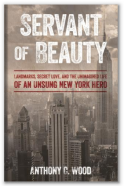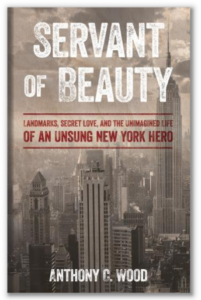
Notes from the Board: Paul Onyx Lozito
February 5, 2019 | Paul Onyx Lozito, NYPAP Board Member
I grew up surrounded by physical and cultural landmarks. I was born in Atlantic City, New Jersey at a hospital located between the historic boardwalk and United States Route 30, one of the original transcontinental motorways which wound through the Pineland National Reserve (the Pine Barrens) to Philadelphia, and then onward to Astoria, Oregon.
My home was just off Route 30 in an area which had grown blueberries for a century and where iron was smelted for the Revolutionary War. My local post office, six miles away, was in Egg Harbor City, an 1850s planned community for Germans seeking relief from anti-immigrant persecution during the Know-Nothing movement. Egg Harbor still welcomes immigrants today to a community built on perfectly square blocks. I grew up on land preserved in 1978 by the United States as the first national Biosphere Reserve. Because of preservation, I grew up in a historic forest near a historic planned town, and in a community with heritage land uses and economy.
I came to appreciate historic communities, landscapes, landmarks, and culture when my community chose to fight a trash transfer station at a location formerly used as farmland. A trash transfer station would have destroyed the land, perhaps scattered refuse into adjacent forests, and would have been a blemish on the character of the community. I saw my community and institutions, such as the New Jersey Pinelands Commission, fight to preserve the land and culture in place. This and an interest behind how United States Route 30 came to be, led me to an interest in planning. Ultimately, this led to a decision to study planning at the Edward J. Bloustein School of Planning and Public Policy at Rutgers University.
At Rutgers, I met professors who fought hard to preserve historic but underinvested communities like my own Egg Harbor. Through work with them, I helped to advance the conversation about how to preserve and make improvements on the historic main street in East Orange, in New Brunswick, and in downtown Newark. After graduating, I was led consequently to a role providing support to the County of Hudson, New Jersey by managing historic preservation grants, and to a job which furthered community planning and preservation in the Greenville community of Jersey City. In tandem, I worked in affordable housing development, which ultimately taught me the financial mechanisms behind much of community preservation.
After my work in Jersey City and after time with AmeriCorps, I attended the Urban Policy and Planning program at Hunter College of the City University of New York. I also became involved with the American Planning Association New York Metropolitan Chapter where I eventually served as an Executive Committee Member. In graduate school, I became interested in comprehensively planned, historic communities such as Sunnyside Gardens, Jackson Heights, Forest Hills, and the Grand Concourse. I also became interested in sustainability.
My interest in sustainability and my experience in affordable housing led me to the Governor’s Office of Storm Recovery, an office tasked with support for communities impacted by Hurricane Irene, Tropical Storm Lee, and Superstorm Sandy. At GOSR, I serve as Director of Housing Policy and Affordable Housing. Some of my most interesting projects include providing support to advance adaptive reuse projects in the Southern Tier and near Albany, and new construction to fill the gaps in historic main streets on Long Island.
In this and beyond, I continue to serve as an advocate to preserve historic facilities and sustain historic communities.




